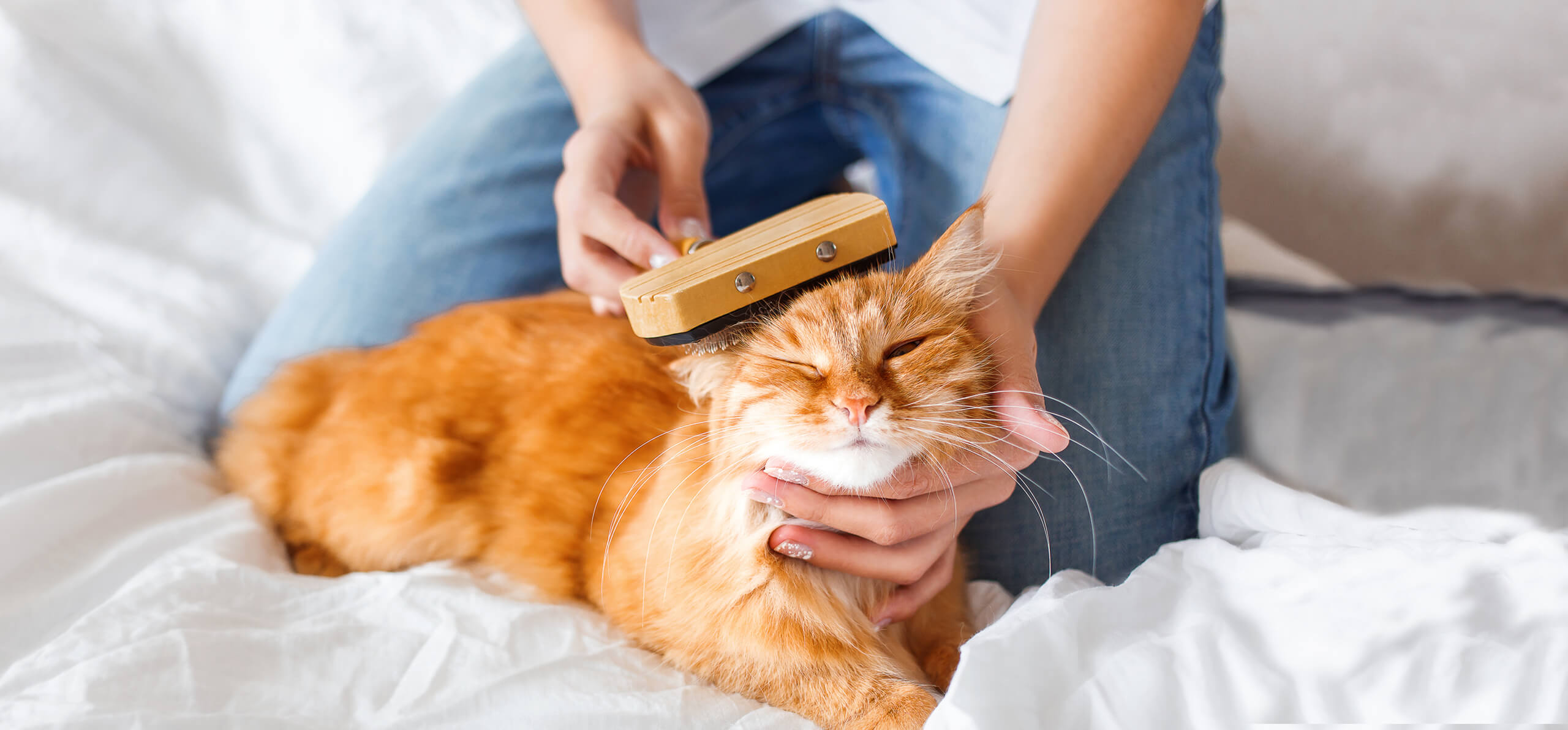While cat pet parents learn to accept this as a natural part of the feline digestive system, we shouldn’t become blasé about hairballs. A few hairballs here and there may be normal but more frequent bouts can be a sign of something else.
If your cat and carpet are plagued by hairballs, consider the causes and solutions that can help resolve them and always check with your veterinarian if the situation becomes hairy.
D.I.Y. Grooming
One of the main reasons indoor cats suffer from hairballs is from swallowing fur when they groom themselves. If your cat ingests a large amount of fur that can’t pass easily through her intestines, the only way out is through her mouth.
Long-haired breeds like Persian or Maine Coon cats are prone to hairballs because they have more fur to groom. If you brush these furballs more frequently, they won’t groom themselves as much, which can help mitigate hairballs.
Try grooming your cat a few minutes every day if you have a long-haired cat. If you have a short-haired feline, brush her three to four times a week. Make it a part of your bonding ritual and you should notice a decrease in hairballs.
Hairballs can also be linked to skin conditions triggered by allergies, infections or parasites. The excessive shedding or over-grooming that comes from these conditions may lead to more ingested hair.
Diet
Another main cause of hairballs is your cat's diet. Even outdoor cats can be susceptible to hairballs if their regular diet is unhealthy and compounded with other creatures such as rodents they find outside.
With a proper, wholesome diet, your cat's digestive system should be able to pass the amount of hair they swallow without trouble. Indoor cats can get into hairier situations if they don’t have enough moisture in their diet so be sure your cat gets a mix of wet food with her dry food and plenty of fresh water to drink. Your veterinarian may even recommend a mini water fountain made especially for cats that you can find at most pet stores.
Blue Buffalo® has a special diet formulated for Indoor Hairball Control that contains a blend of natural fiber sources and Omega fatty acids to help reduce hairball formation. These healthy fats also support a healthy skin and coat, which in turn reduces the need for excessive grooming.
If you don't notice an improvement after grooming your cat more frequently and adding natural cat food supplemented with Omega fatty acids, have your veterinarian check your feline’s skin and coat. He or she may recommend certain hairball medications or adding other types of fiber to your cat’s diet.
If hairballs continue to plague your feline, be sure to visit your veterinarian to rule out gastrointestinal disease. Inflammatory bowel disease is the most common disease-related cause of hairballs, but they can also be a sign of other issues, such as internal parasites, pancreatitis, hernias, cancer, or foreign bodies that require a professional diagnosis.

